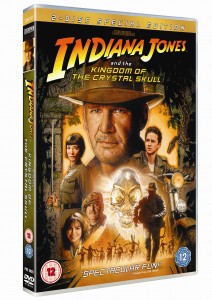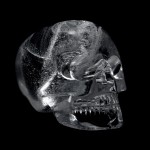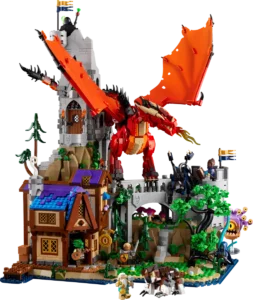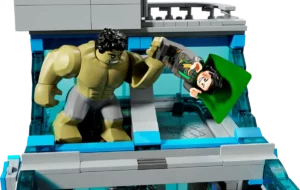 Indiana Jones and the Kingdom of the Crystal Skull is released to dvd and Blu Ray on 10th November 2008. With Crystal Skulls being the one enigma in the new film; here is some information about the Crystal Skill at the British Museum in London.
Indiana Jones and the Kingdom of the Crystal Skull is released to dvd and Blu Ray on 10th November 2008. With Crystal Skulls being the one enigma in the new film; here is some information about the Crystal Skill at the British Museum in London.
What is it?
A life-size carving of a human skull made from a single block of rock crystal (a clear, colourless variety of quartz). It was acquired by the Museum in 1897 purporting to be an ancient Mexican object. However scientific research conducted by the Museum has established that the skull was most likely produced in the 19th century in Europe. As such the object is not an authentic pre-Columbian artefact.
How did it enter the collection?
The skull was purchased by the Museum from Tiffany and Co, New York in 1897. At the time of its purchase, the skull was said to have been brought from Mexico by a Spanish officer before the French occupation (in 1863). It was sold to an English collector and acquired at his death by Eugene Boban, a French antiquities dealer, later becoming the property of Tiffany and Co. The skull was exhibited for many years at the Museum of Mankind in Piccadilly (which housed the British Museum’s Ethnographic collection), it is currently on permanent display at the British Museum in the Wellcome Trust Gallery (room 24).
What scientific research has been undertaken?
 The British Museum has examined the skull several times between 1950 and 1990. In 1996 an on-going collaborative project focusing on the British Museum’s skull and a skull in the collection of the Smithsonian Institute, Washington DC was started. Contrary to popular belief there are currently no scientific techniques which can be used to accurately establish when a stone or mineral object was produced. Research has therefore focused on how the skulls were carved, where the quartz originated from and what is known about the early history of the skulls. Observations made under a binocular microscope and in a scanning electron microscope suggest that the techniques of carving used to produce the skulls post-dated the Aztec period. The tool marks on the skulls do not match those on other Aztec period rock-crystal objects, which were invariably carved by hand. It is most likely that the British Museum skull was worked with a rotary wheel (or jeweller’s wheel), which was unknown in the Americas before the arrival of the Europeans. The research also suggests that the rock crystal used in the manufacture of the British Museum’s skull may have come from Brazil, an area outside of the ancient trade network of Mexico.
The British Museum has examined the skull several times between 1950 and 1990. In 1996 an on-going collaborative project focusing on the British Museum’s skull and a skull in the collection of the Smithsonian Institute, Washington DC was started. Contrary to popular belief there are currently no scientific techniques which can be used to accurately establish when a stone or mineral object was produced. Research has therefore focused on how the skulls were carved, where the quartz originated from and what is known about the early history of the skulls. Observations made under a binocular microscope and in a scanning electron microscope suggest that the techniques of carving used to produce the skulls post-dated the Aztec period. The tool marks on the skulls do not match those on other Aztec period rock-crystal objects, which were invariably carved by hand. It is most likely that the British Museum skull was worked with a rotary wheel (or jeweller’s wheel), which was unknown in the Americas before the arrival of the Europeans. The research also suggests that the rock crystal used in the manufacture of the British Museum’s skull may have come from Brazil, an area outside of the ancient trade network of Mexico.
Do others exist?
There is a larger white quartz skull in the collection of the Smithsonian Institute, Washington DC and a number of other large skulls in private ownership. There are also a number of smaller rock crystal skulls. It seems highly unlikely that any are genuine Aztec objects. Large rock crystal skulls first began to surface in public and private collections, during the second half of the nineteenth century, and an increasing number of large and small quartz skulls have become known in recent decades, mostly in private hands. However, no such skull has ever been reported from well-documented official archaeological excavation. Archival research has, in addition, produced a link between the British Museum”’ and another rock crystal skull (in the Musee du Quai Branly, Paris). Both skulls passed through the hands of the French dealer Eugene Boban, raising suspicions regarding their provenance.
Why were the skulls produced?
It is impossible to be sure why the skulls were produced. It maybe that they were produced to satisfy demand in the US and Europe in the nineteenth century when interest in collecting Mexican material was at its height.
Are there any genuine Aztec crystal skulls?
It seems unlikely, since no quartz crystal skull has ever been found on any of the many well-documented official archaeological excavations of ancient sites.
Did the Aztecs make these kinds of objects?
Skulls and skull imagery feature in Aztec art at the time of the first contact with the Spanish in 1519. However they were usually carved in relief in basalt as architectural elements rather than produced in rock crystal or white quartz.
Do they have special powers?
There are some who claim that crystal skulls have healing qualities, emit energy, have the ability to convey vital information or are repositories of ancient wisdom. Large quartz crystal skulls have generated great interest and fascination since they began to surface in public and private collections during the second half of the nineteenth century. The British Museum views the skull in its collection as an enigmatic object of great interest but with no supernatural properties.
What is the British Museum’s response to the new movie?
As entertainment the movie will surely appeal to the public, but it is very much a work of fiction. We hope, however, that it will encourage visitors to see the skull at the British Museum and to learn more about Aztec culture.
More information can be found by visiting: http://www.britishmuseum.org/explore/highlights/highlight_objects/aoa/r/rock_crystal_skull.aspx



